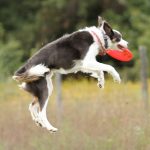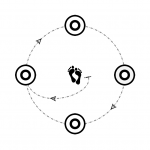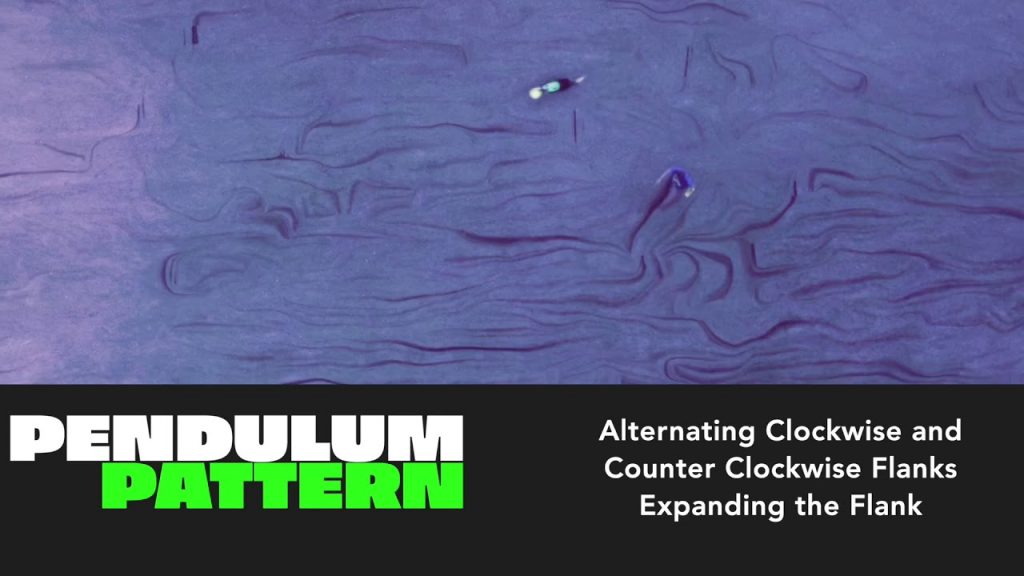Shapes are created by the position and movement of dog, handler, and disc. And shapes can be created by the dog, the handler, and the placement of the disc. Shapes are a fact of disc dog freestyle.
When the dog leaves the handler for a catch, that tends to create a line. When the dog is away from the handler and moves across the field to make a catch, as in a Zig Zag A Zig Zag is a series of catches in smooth succession that forces the dog to move back and forth across the field. Usually performed at a distance of 8-20 yards, the Zig... More or Around the World
A Zig Zag is a series of catches in smooth succession that forces the dog to move back and forth across the field. Usually performed at a distance of 8-20 yards, the Zig... More or Around the World An Around the World is a disc dog flatwork pattern consisting of 4 catches in a circular pattern around the handler. This pattern is typically larger than 5 yards and often features creative... More, that tends to create a Shape.
An Around the World is a disc dog flatwork pattern consisting of 4 catches in a circular pattern around the handler. This pattern is typically larger than 5 yards and often features creative... More, that tends to create a Shape.


Responses